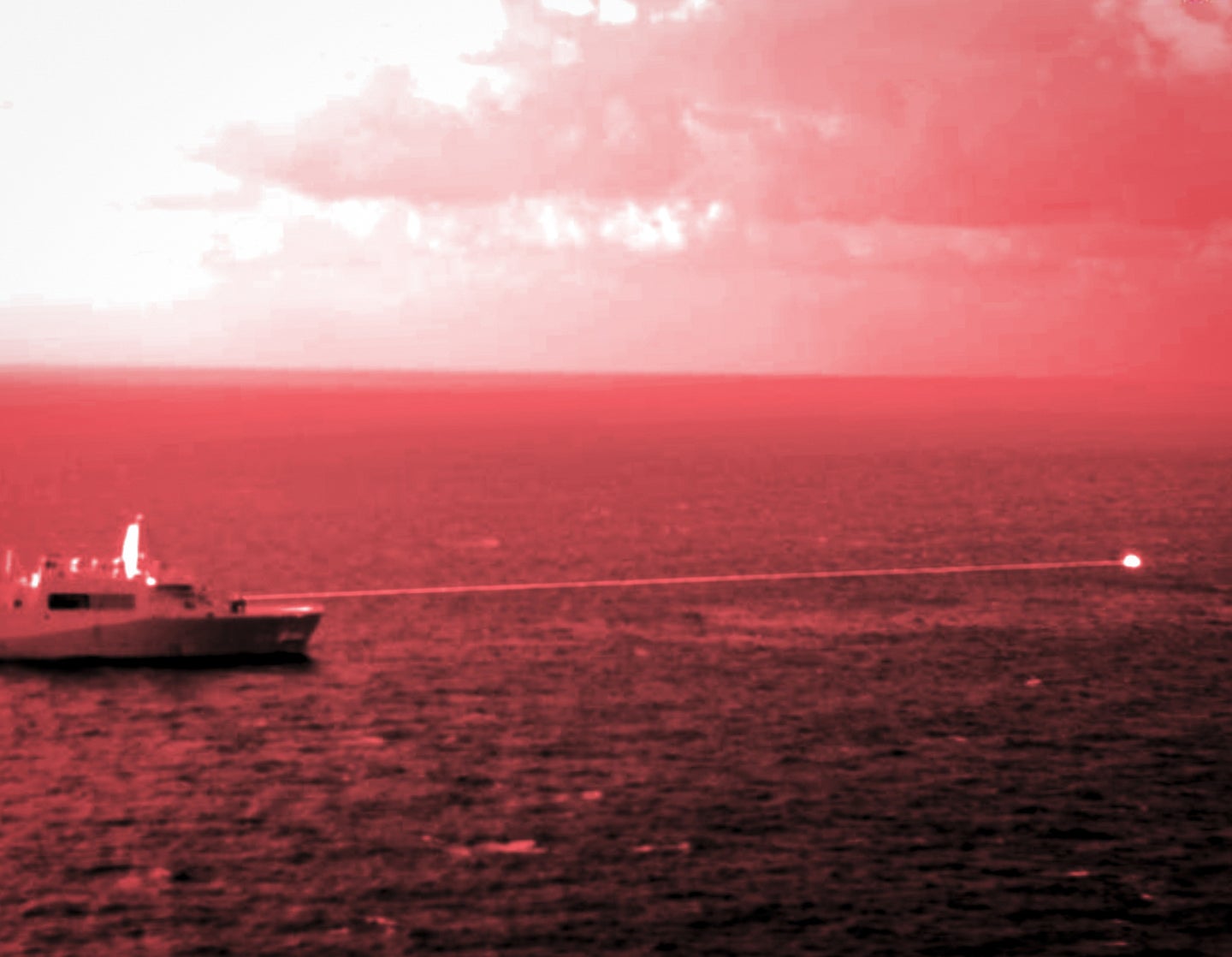The US Navy is testing out drone-zapping laser weapons
A demonstration from the USS Portland is the most recent example of how using a laser could be a cost-effective way to fight threats.

A sustained flash of light produces fire, and then wreckage. This month, the US Navy continued its tests of a laser weapon from the deck of the USS Portland, destroying a target floating on the surface of the Gulf of Aden. These laser demonstrations are part of a broader modernization effort, with the US Navy trying out new and varied tools in the waters around the Middle East.
The test took place on December 14. It was preceded by tests in the Pacific in May 2020, in which the Portland used the same laser weapon to destroy a target drone. Both demonstrations are part of the Navy figuring out how, exactly, its larger ships can protect themselves from smaller, cheaper threats.
To better understand modern directed-energy weapons, it’s important to take a step back from the science-fiction idea of a laser weapon. High-powered beams of light are expensive to develop and deploy, but they offer a kind of cost-savings once they are up and running. Provided a ship can generate the electrical power needed, a laser is, shot for shot or threat for threat, a cheaper mechanism than anti-air missiles or potentially even .50 caliber bullets for destroying incoming attacks.
If the threats the Navy wants to defeat are cheap, such as Qasef-1 drones, then what the Navy needs to deploy is a countermeasure that’s also cheap to use.
Drones, especially loitering munitions that fly like drones but attack like missiles, are a durable and increasing threat in modern warfare. Some of the groups fighting in Yemen have used expendable drones as missiles in far-reaching attacks, and plenty of modern anti-air defenses, like anti-plane missiles, are at best cost-ineffective against drones, and sometimes even unable to detect and intercept drone attacks.
[Related: The US Navy is testing autonomous seafaring robots that patrol the ocean]
A laser does not solve the detection part of the threat, but it does give commanders a cheaper alternative than shooting a missile at a drone. If the laser can burn through an attacking drone quickly enough, it can then be turned to face another target, and by expending only generated electric power, it can protect a ship from a host of attacks.
“You can do everything in the world to understand how you think laser weapons are going to be used, but you put this controller in the hands of a sailor who’s going to play with it and do the thing they do with the operational interface, and then they’re going to decide to use it in ways we can’t imagine,” Frank Peterkin, the Navy’s Senior Technologist for Directed Energy, told USNI News in 2019, after the selection of the USS Portland for the weapon was announced.
The USS Portland is an Amphibious Transport Dock, capable of landing 700 Marines by dedicated landing craft, as well as helicopters and V-22 Ospreys. It’s the kind of ship that will need to get close to danger, with a small set of ship-board weapons to ensure its survival to and beyond that point.
Putting a laser weapon on the Portland gives it extra options against any threats it may encounter, like drones, or attempts to attack it with small boats. The most infamous example of this threat occured in October 2000; while docked in Yemen’s Aden harbor, the destroyer USS Cole was attacked by suicide bombers in a small boat. The attack killed both bombers and 17 sailors, and injured 37 other people on board the ship.
[Related: America’s Laser Gun Goes To War]
When the US Navy tested a laser weapon in 2014, on the USS Ponce, it used it to destroy the engine of a small motorboat, the kind of use that could protect a ship from attackers using inexpensive means to try and stop a ship before it reaches shore. The Ponce’s laser was 30 kw. As designed, the laser on board the Portland is at 150 kw, letting it burn through targets faster and thus disable more threats to the ship.
This demonstration of the laser aboard the Portland follows a pattern of demonstrations of Navy robots in the Gulf of Aden and the Persian Gulf. Whatever danger the Navy anticipates in the future, it is now regularly exploring how new technology in the seas adjacent to the Arabian Peninsula can help it out.
Watch a video of the Portland firing its laser below:

